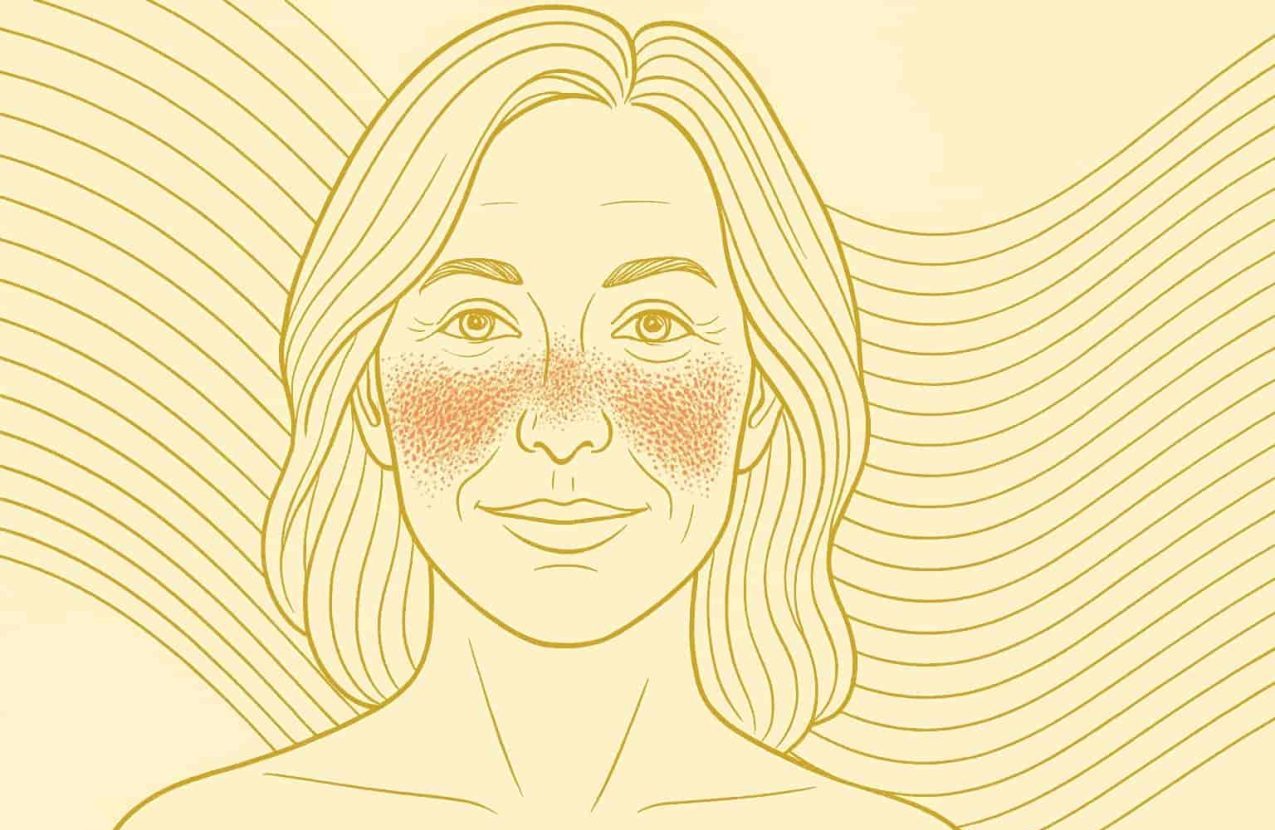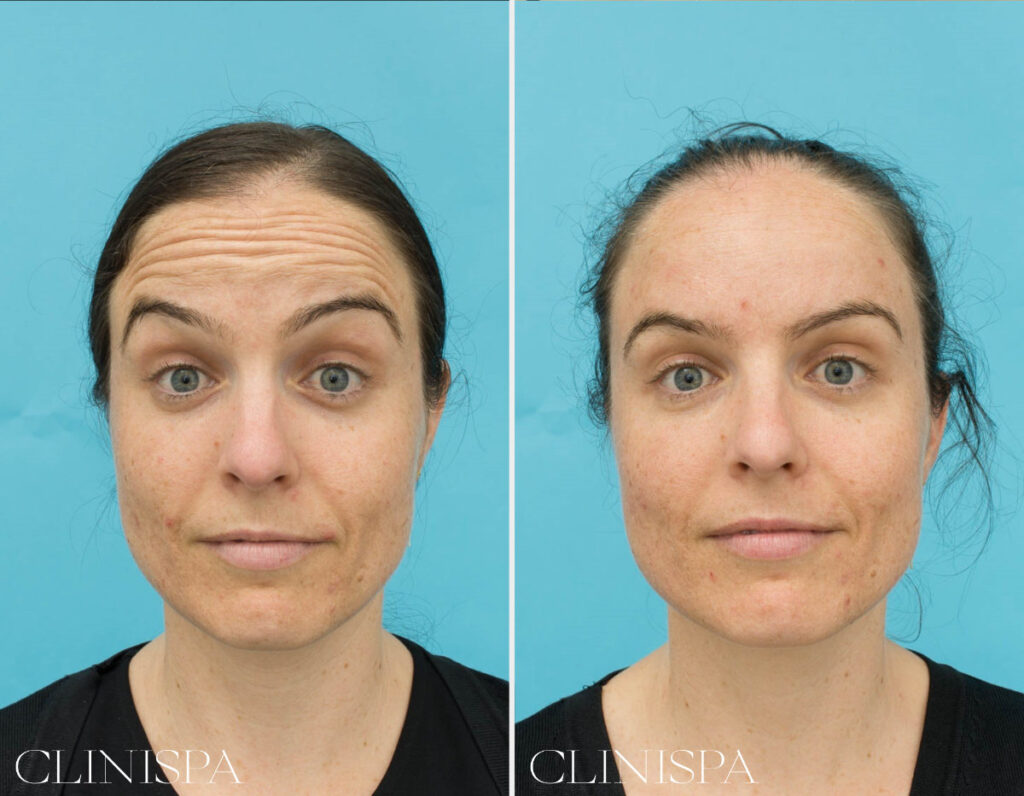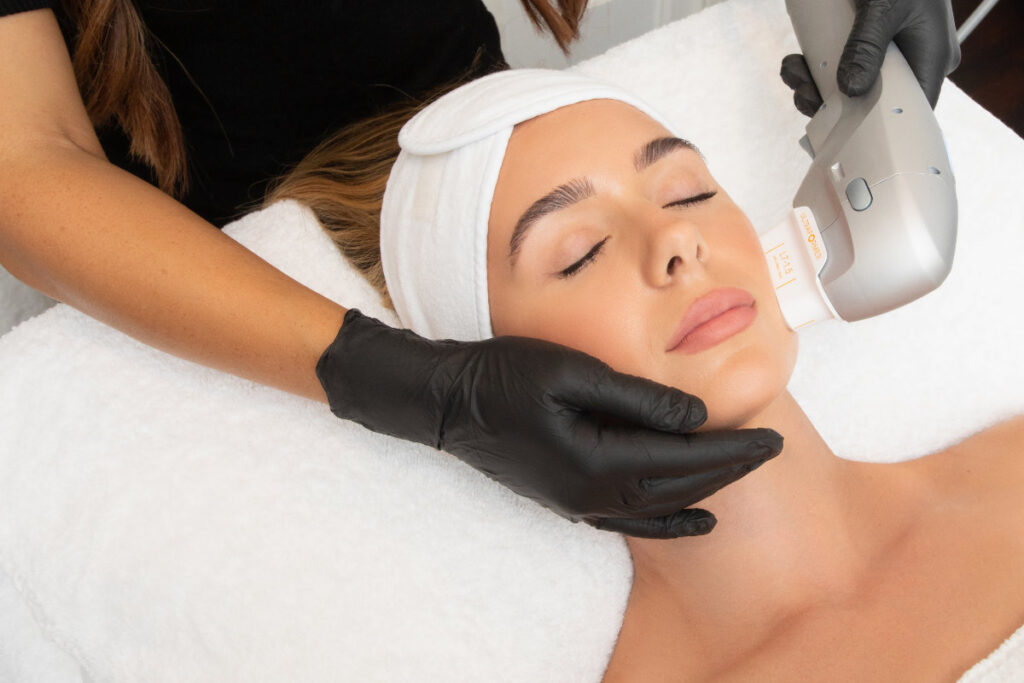
Facial redness, flushing, and sensitivity are concerns shared by many individuals across Perth. For some, these may be short-lived, but for others, these symptoms persist and interfere with daily life. In such cases, these signs may point to rosacea, a chronic skin condition that requires clinical attention.
At CLINISPA, located in Perth, Western Australia, Dr Guy Watts, a highly experienced Specialist Plastic & Reconstructive Surgeon, provides medically-led assessment and care for patients experiencing long-term facial redness and vascular sensitivity. Understanding rosacea – its causes, symptoms, and treatment options – supports individuals to make informed decisions about their skin.
What Is Rosacea?
Rosacea is a chronic inflammatory skin condition that primarily affects the central areas of the face. It is known for its variability – some people experience persistent redness and occasional flushing, while others may develop inflammatory lesions, visible blood vessels, or thickened skin over time.
Unlike temporary irritation caused by skincare or sunburn, rosacea represents a long-term dysfunction of the skin’s immune and vascular systems. It can become more prominent with age or environmental exposure, particularly if not addressed early.
At CLINISPA Perth, we frequently see patients who have managed symptoms with over-the-counter remedies without recognising they may be living with rosacea. Early identification and tailored treatment can help reduce long-term discomfort and visible symptoms.
Common Signs and Symptoms
Rosacea presents with a broad spectrum of symptoms that may change over time. Recognising these early and seeking professional advice is key to long-term control and comfort.
Extended signs and symptoms include:
- Persistent Facial Redness: This is often the earliest and most recognisable sign. Redness typically begins in the centre of the face, such as the cheeks and nose, and may extend to the forehead and chin. It may resemble a permanent blush and does not fade easily with rest or cool environments.
- Flushing and Blushing Episodes: These transient episodes are triggered by common factors such as heat, spicy food, or emotional stress. Flushing may occur frequently and last longer than usual, sometimes accompanied by a warm or burning sensation in the skin.
- Visible Blood Vessels (Telangiectasia): Fine, thread-like red or purple veins may appear just beneath the skin’s surface, particularly around the nose and cheeks. These are due to damaged or enlarged capillaries and can become more noticeable over time.
- Papules and Pustules: Some forms of rosacea include inflammatory bumps that resemble acne. However, these lesions do not contain blackheads, distinguishing them from typical acne. They may appear in crops and fluctuate with flare-ups.
- Skin Irritation and Burning: Many individuals experience heightened skin sensitivity, with stinging, burning, or itching – particularly when using certain skincare products or being exposed to temperature changes.
- Thickened Skin (Phymatous Changes): In long-standing rosacea, especially in men, the skin – most commonly on the nose – may thicken and develop an irregular surface. This is referred to as rhinophyma and may require procedural intervention.
- Eye Symptoms (Ocular Rosacea): Up to half of those with rosacea develop eye-related issues, such as dryness, redness, burning, or eyelid swelling. In some cases, this may occur before skin symptoms are visible.
Understanding which subtype of rosacea is present – erythematotelangiectatic, papulopustular, phymatous, or ocular – allows the team at CLINISPA Perth to tailor an approach that reflects your individual presentation.

Why Does Rosacea Occur?
Rosacea’s exact cause is unknown, but a growing body of research points to a combination of vascular, immune, genetic, microbial, and environmental factors.
Key contributors include:
- Vascular Dysregulation: Abnormal blood vessel function leads to increased blood flow and prolonged redness. The blood vessels become more reactive, dilating in response to triggers and causing warmth, redness, and visibility.
- Immune System Hyperactivity: Individuals with rosacea appear to have heightened immune responses in their skin. Certain proteins and peptides, such as cathelicidin, are found at elevated levels and contribute to inflammation.
- Demodex Mite Overpopulation: These microscopic mites naturally live on human skin, but their overgrowth in people with rosacea may trigger an inflammatory response.
- Genetic Susceptibility: A family history of rosacea increases the likelihood of developing it. Genetic factors may affect vascular function, skin immunity, and inflammatory responses.
- Environmental Triggers: Rosacea flares are often associated with external stimuli, which vary between individuals.
At CliniSpa, patients are supported in identifying their unique triggers and understanding the physiological processes behind their symptoms. Dr Guy Watts encourages the team to take the time to explain how the interplay of these factors affects your skin, helping to remove confusion and uncertainty around diagnosis.
Who Is Most Likely to Experience Rosacea?
Although rosacea can affect anyone, certain demographic and biological factors increase susceptibility.
At-risk groups include:
- Adults aged 30–60: Rosacea often begins in mid-adulthood, even in individuals who previously had no history of skin issues.
- Fair-skinned individuals: People with light skin, blue eyes, and blond or red hair have a higher prevalence, particularly those of Northern European descent.
- Those with a family history: Genetics play a role, and having a first-degree relative with rosacea may increase your risk.
- Women: More women are diagnosed with rosacea, though men may experience more pronounced skin thickening in advanced stages.
- Individuals in sunny climates: UV exposure is a major trigger, and residents of locations like Perth may be particularly prone due to high sun exposure year-round.
At CLINISPA Perth, we confirm that all skin types – including those with less visibly obvious redness – are assessed with sensitivity and care, avoiding misdiagnosis in skin of colour.
Living in Perth: How Environment Plays a Role
The environment in Perth, WA, can significantly influence the severity and frequency of rosacea flare-ups. Understanding how to adapt skincare and lifestyle around environmental stressors is key to managing symptoms effectively.
Local environmental factors include:
- High UV Exposure: Perth experiences a high UV index, even during cooler months. Sunlight is one of the most commonly reported triggers for facial redness and vascular sensitivity.
- Heat and Humidity: Warm temperatures and sudden temperature changes can dilate blood vessels, leading to increased flushing and discomfort.
- Wind and Dryness: Perth’s coastal conditions and inland winds may strip the skin of moisture, weakening the skin barrier and increasing inflammation.
- Air Pollution and Allergens: Seasonal pollen and air pollutants may aggravate sensitive skin, especially for those with coexisting allergies or eczema-like symptoms.
Dr Guy Watts and his team at CLINISPA help patients navigate the realities of Perth’s climate by recommending protective skincare, sun-safe routines, and targeted therapies that work in harmony with the environment.
How Is Rosacea Diagnosed?
A clinical diagnosis of rosacea is made based on physical examination and a discussion of symptoms and triggers. There is no single test, so diagnosis requires experience and attention to subtle signs.
The diagnostic process includes:
- Detailed medical history: Understanding when symptoms began, what exacerbates them, and how they have evolved over time.
- Physical skin assessment: Evaluation of redness patterns, visible vessels, lesion type, and areas affected.
- Differentiation from other skin conditions: Rosacea can resemble acne, seborrheic dermatitis, lupus, or perioral dermatitis. An accurate diagnosis is essential for effective treatment.
At CLINISPA, consultations are thorough, private, and collaborative – allowing time to understand the full context of the condition, not just the symptoms.
What Can Be Done? – Managing Facial Redness and Flushing
Rosacea requires a multi-faceted management plan tailored to each patient’s triggers, symptoms, and treatment preferences. While it cannot be cured, ongoing management can improve comfort and reduce visible symptoms.
Topical Medications
- Anti-inflammatory agents: Azelaic acid and metronidazole are commonly prescribed to calm inflammation, reduce redness, and minimise bumps.
- Mite-targeting treatments: Ivermectin targets Demodex mites and may reduce immune system activation.
- These are often used daily or in cycles, depending on flare severity.
Oral Medications
- Low-dose antibiotics: Doxycycline is used for its anti-inflammatory properties, not for infection. It is typically prescribed short term or as maintenance.
- Isotretinoin: Occasionally prescribed in resistant cases under careful monitoring.
Non-Surgical Treatments at CLINISPA Perth
- IPL Therapy: Intense Pulsed Light reduces persistent redness by selectively targeting blood vessels. Typically performed in a series of treatments.
- Dualmode Laser: Combines ablative and non-ablative technology for deeper skin resurfacing and vascular improvement.
- Healite II LED Therapy: A gentle, non-invasive therapy that uses light to reduce inflammation, accelerate healing, and support overall skin function.
These in-clinic treatments are performed under medical supervision, ensuring safety and efficacy, especially in sensitive skin.
Lifestyle and Skincare Guidance
- Daily sun protection: Broad-spectrum SPF 30+ is essential, even in winter. Physical blockers (zinc oxide or titanium dioxide) are often best tolerated.
- Barrier repair: Use of moisturisers that support the skin’s lipid barrier can reduce sensitivity and support resilience.
- Trigger avoidance: Patients are educated on identifying personal triggers, from diet and temperature to alcohol or topical products.
- Supportive skincare: Gentle cleansers, fragrance-free serums, and non-comedogenic moisturisers are key components of daily care.
CLINISPA Perth offers skin health reviews to optimise home care routines and ensure patients are using products aligned with their diagnosis and goals.
Seeking Support at CLINISPA
Managing rosacea is not just about symptom control – it’s about understanding the condition, minimising stressors, and developing a sustainable, personalised strategy.
Under the medical leadership of Dr Guy Watts, Specialist Plastic & Reconstructive Surgeon, CLINISPA provides a patient-focused approach rooted in clinical expertise. Treatment pathways are never one-size-fits-all – each plan is tailored to your presentation, skin type, lifestyle, and concerns.
Patients often express relief at finally having a clear diagnosis and feeling supported in a professional, confidential environment. The first step toward progress is seeking trusted medical advice.
FAQs About Facial Redness and Flushing – Rosacea
How do I know if my facial redness is actually rosacea?
Persistent facial redness that does not fade with time or skincare changes may indicate rosacea. If you also experience frequent flushing, visible veins, or sensitivity, it’s best to seek a clinical evaluation. At CLINISPA Perth, detailed assessments are conducted to help patients understand whether their redness stems from rosacea or another skin condition.
Can rosacea appear suddenly, even if I’ve never had skin issues before?
Yes. Many individuals begin to experience rosacea symptoms in their 30s or later, even without a previous history of skin concerns. Sudden flushing, discomfort, or visible blood vessels can be early indicators. Dr Guy Watts encourages early assessment to identify the underlying cause and establish appropriate management.
Are flare-ups predictable, or do they happen randomly?
While flare-ups can sometimes feel sudden, they are often linked to identifiable triggers such as sun exposure, heat, certain foods, or emotional stress. Through guided consultations at CLINISPA, patients are supported in recognising patterns in their flare-ups and adjusting their skincare and habits to reduce episodes over time.
Is rosacea contagious or caused by bacteria?
No. Rosacea is not contagious and cannot be passed from person to person. While the presence of certain skin mites or bacteria may play a role in symptom development, rosacea itself results from a combination of immune, vascular, and environmental factors unique to each individual.
Can laser or light-based treatments help with my facial redness?
Yes, many patients benefit from medical-led treatments such as Intense Pulsed Light (IPL) or Dualmode Laser, which can reduce visible blood vessels and overall redness. These therapies are offered at CLINISPA Perth, where each session is based on the patient’s skin type, severity, and response to prior treatments.
Is rosacea linked to other health issues?
Rosacea primarily affects the skin, but some individuals may experience eye-related symptoms such as dryness, burning, or irritation. In rare cases, it may coexist with other inflammatory or vascular conditions. At CLINISPA, every patient’s full medical context is considered when planning treatment to ensure safety and suitability.
What kind of skincare should I use if I have rosacea?
• Those with rosacea typically benefit from fragrance-free, non-irritating products that support the skin barrier. Sunscreen is especially important. Dr Guy Watts and the team at CLINISPA Perth provide guidance on medical-grade skincare and routines that align with each patient’s sensitivity and goals.
Medical References
- Rosacea: Diagnosis and Treatment – American Academy of Family Physicians – https://www.aafp.org/pubs/afp/issues/2015/0801/p187.html
- Relieving Rosacea – NIH News in Health – https://newsinhealth.nih.gov/2020/07/relieving-rosacea
- Rosacea – NHS Inform – https://www.nhsinform.scot/illnesses-and-conditions/skin-hair-and-nails/rosacea/
- Rosacea: A Review – PubMed Central – https://pmc.ncbi.nlm.nih.gov/articles/PMC2700634/
- Integrative Approaches to Rosacea – University of Wisconsin Integrative Health – https://www.fammed.wisc.edu/files/webfm-uploads/documents/outreach/im/tool-rosacea.pdf
- Rosacea Fact Sheet – Virginia Commonwealth University Student Health Services – https://health.students.vcu.edu/media/student-affairs-sites/ushs/docs/ROSACEA.pdf
When to Take Action?
You should consider booking a consultation if you notice any of the following:
- Redness that persists beyond a few weeks, especially in specific facial zones.
- Frequent flushing after exposure to heat, stress, or food triggers.
- Visible blood vessels that are increasing in number or intensity.
- Breakouts that resemble acne, but are unresponsive to usual treatments.
- Skin discomfort such as burning, itching, or stinging.
- Changes in skin texture, especially thickening on the nose.
- Eye symptoms such as gritty sensation, dryness, or recurrent redness.
At CLINISPA, patients from Perth and surrounding areas are supported in understanding these symptoms and exploring suitable treatment pathways.
Final Thoughts
Rosacea is a chronic but manageable condition that affects more people than many realise. Through proper diagnosis, tailored interventions, and a focus on education, individuals can gain control over their symptoms and improve their skin health long term.
If you’re noticing facial redness or flushing that’s interfering with your comfort or daily life, reach out to CLINISPA Perth for a comprehensive assessment. Dr Guy Watts, Specialist Plastic & Reconstructive Surgeon, and his team provide evidence-based care within a private, professional environment.
There is no need to wait until symptoms worsen. Early understanding and personalised care can make all the difference.
Further Reading
- Read more about Dermal Treatments
- Read more about Wrinkle Treatments
- Read more about Facial Wrinkles

